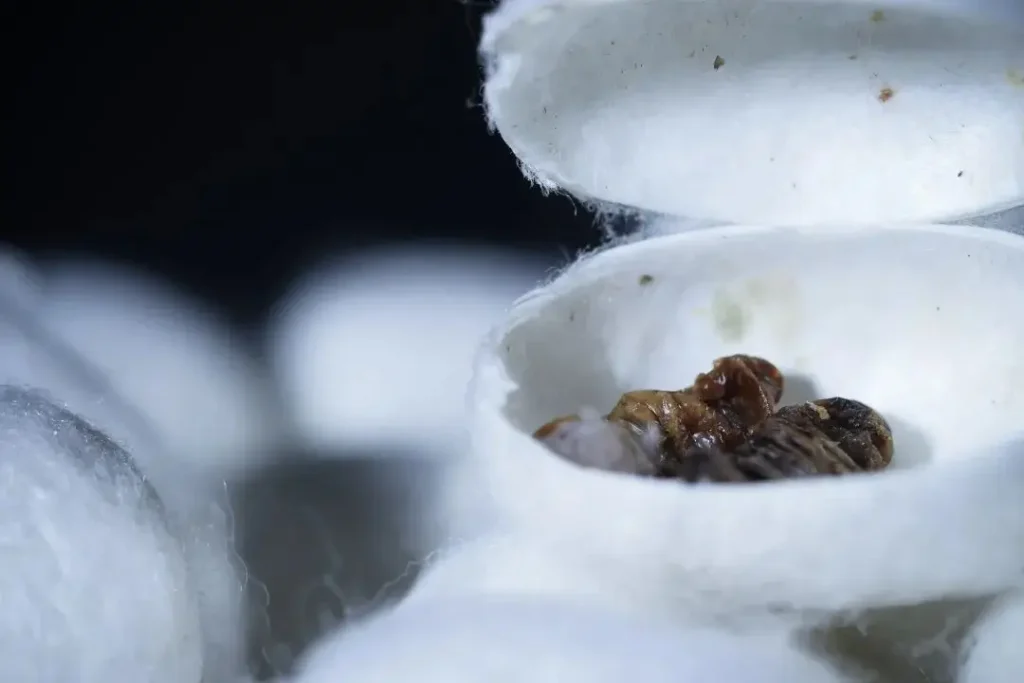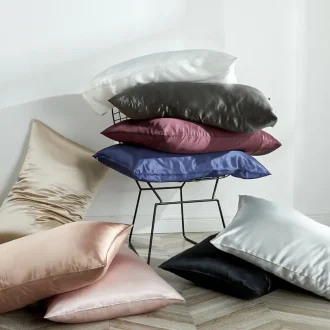Types of Natural Silk
Silk has always been known as one of the most luxurious and elegant fabrics in the world. It’s soft, shiny, and feels amazing against the skin. But did you know that not all silk is the same? There are actually several types of natural silk, each with its own unique look and feel. In this blog, we’ll explore the different kinds of natural silk, including mulberry silk, dupion silk, wild silk (like tussar, eri, and muga), and spun silk. By the end, you’ll be an expert on silk and ready to choose the perfect one for your next purchase!
Mulberry Silk
Mulberry silk is the most well-known and widely used type of silk. It comes from the Bombyx mori silkworm, which feeds on mulberry leaves—hence the name. Mulberry silk has been used for thousands of years and is prized for its smoothness, softness, and durability.
Because the silkworms are raised in controlled environments, the silk threads they produce are long, continuous, and very fine. This makes mulberry silk extra strong and smooth. When you think of luxurious silk, this is probably the type that comes to mind. It’s often used in high-end bedding, clothing, and accessories like scarves because it feels incredibly soft against the skin.
One of the best things about mulberry silk is that it’s hypoallergenic, meaning it’s gentle on sensitive skin and less likely to cause allergies. Plus, it’s breathable, which means it helps regulate temperature, thus keeping you cool in the summer and warm in the winter.
Dupion Silk
Dupion silk is another beautiful type of silk, but it’s quite different from mulberry silk. This type of silk is made when two silkworms spin their cocoons so close together that the silk threads become tangled. The result? The threads from these intertwined cocoons are thicker and have natural bumps or slubs, giving dupion silk its unique texture.
Dupion silk has a slightly rougher texture than mulberry silk, but it still has that wonderful shine and luxurious feel. Its textured surface creates a beautiful, almost shimmering effect, making it perfect for special garments like wedding dresses or evening gowns. It’s also a bit stiffer than other silk, which helps it hold its shape—ideal for formal wear.

Because of its natural texture and crispness, dupion silk is also a popular choice for home décor, like curtains and cushions, adding a touch of elegance to any space.
Wild Silk
Unlike mulberry and dupion silk, which are produced by domesticated silkworms, wild silk comes from silkworms that live and grow in the wild. These silkworms feed on a variety of plants instead of just mulberry leaves, which gives wild silk a rougher texture and often a more natural, earthy color. There are three main types of wild silk: tussar silk, eri silk, and muga silk. Let’s take a closer look at each:
- Tussar Silk
Tussar silk comes from wild silkworms (Antheraea genus) that live in forests and feed on leaves from trees like Arjun and Terminalia. It’s mainly produced in India. Tussar silk has a natural golden or coppery hue and a rougher texture compared to mulberry silk. It’s often used in traditional Indian garments and is known for its rich, natural look.
- Eri Silk
Eri silk is produced by Philosamia ricini, a kind of wild silkworms. Unlike traditional silk production, where the silkworms are killed inside their cocoons to extract long silk threads, Eri silk allows the silkworms to complete their natural life cycle. After the moths emerge from the cocoons, the remaining silk is collected and spun into fabric. For this reason, Eri silk is also called “peace silk” and is an ethical and eco-friendly option for those who care about animal welfare.
- Muga Silk
Muga silk is one of the rarest and most treasured types of silk in the world, produced exclusively in Assam, India. This silk is known for its natural golden hue and incredible durability. The silkworms that produce Muga silk, known as Antheraea assamensis, feed on plants like som and sualu. Its rich shine and long-lasting quality make Muga silk highly prized, especially for traditional garments and ceremonial attire.
Spun Silk
Spun silk is made from shorter silk fibers and broken cocoons. While mulberry silk comes from long, continuous threads, spun silk is created by spinning together these shorter pieces of silk fiber, similar to how cotton or wool is spun.
Because it’s made from shorter fibers, spun silk is not as smooth or shiny as reeled silk (like mulberry silk). However, it’s still soft and luxurious, and it’s often more affordable than other types of silk. Spun silk is great for making softer, cozier items like scarves, shirts, and even some types of bedding.
Mulberry Silk vs. Other Silk
Now that we’ve explored each type of natural silk, what exactly are the differences among them? To answer this question, we made a rating of each silk type based on smoothness, shine, durability, softness, and breathability on a scale from 1 to 5 (1 being the lowest and 5 being the highest).

As you can see, mulberry silk stands out for its exceptional qualities. It is the smoothest and softest of all silk types, offering a luxurious feel and comfort that is hard to match. With a rating of 5 in shine, mulberry silk has a brilliant luster, making it perfect for elegant products like pillowcases and bedding. It also ranks high in durability, making it long-lasting and resistant to wear and tear. Additionally, mulberry silk is highly breathable and provides excellent moisture-wicking ability, making it ideal for year-round use, especially in bedding and clothing.
When compared to Muga silk, which also ranks high in shine, durability, and breathability, both are luxurious and long-lasting. However, Muga silk, known for its natural golden hue and rarity, is the most expensive silk due to its limited production in Assam, India. While Muga silk shares many qualities with mulberry silk, it lacks the same level of softness, moisture-wicking ability and affordability. Mulberry silk, on the other hand, combines premium quality with a more accessible price, making it an excellent choice for those looking for a balance of luxury, comfort, and value.
Silk Suen
Mulberry Silk Pillowcase
- Hypoallergenic
- Lock in moisture
- Gentle on skin & hair
- Help sleep

If you’re ready to treat yourself to the ultimate in luxury and comfort, now is the time to experience the beauty of 100% pure mulberry silk from Silk Suen. Our silk products are not only incredibly soft and durable but also certified by the OEKO-TEX® Standard 100, ensuring they are free from harmful chemicals and safe for your skin. Whether you’re looking to upgrade your bedding, wardrobe, or simply want to practice a little self-care, our premium silk collection offers the perfect balance of elegance and well-being. Explore our range today and indulge in the timeless beauty of pure mulberry silk!
Silk Suen provides premium, 100% pure mulberry silk products, including bedding, clothes and accessories. Shop here and indulge in the ultimate in comfort, elegance, and beauty.



